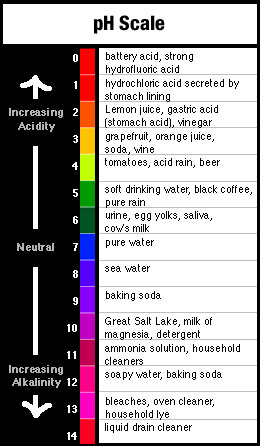ENZYMES
VOCABULARY:
Enzyme- a protein substance that is necessary for most of the chemical reactions that occur in living cells.
¨ Enzymes are known as catalysts
¨ Enzymes can’t be changed or used up because if they were used up they couldn’t do their job to make chemical reactions occur
¨ They speed up a reaction
¨ They can break something down
Example of a chemical reaction: Cellular Respiration
Glucose is broken down by an enzyme to make energy got the cells.
Catalyst: a substance that brings about (causes) a reaction without being changed. They cause a reaction to take place.
Substrate: the substance an enzyme acts upon
Active Site: a region on the surface of an enzyme where there substrate fits.
The ability of enzymes to act as catalysts depends on SHAPE!!
Specificity: the idea that there are specific enzymes for specific substrates.
A theory about how enzymes and substrates fit together is called the Lock and Key Theory. It is an accepted body of knowledge stating that a specific enzyme can only fit with a specific enzyme, similar to how only one specific key opens only one specific lock. You would never be able to go to your neighbor’s house and open their front door with your house key! You would need your neighbor’s key!
When an enzyme and a substrate join together they form an enzyme-substrate complex
BUT the union of the enzyme and substrate is only temporary, once the enzyme does its job with the substrate it lets go and goes on to do its job with another substrate.
“ASE” means that it is an enzyme! (just like “ose” means sugar)
Examples of enzymes:
Lipase is an enzyme that breaks down Lipids
Protease is an enzyme that breaks down Proteins
Maltase is an enzyme that breaks down Maltose
Factors affecting enzyme action:
1) pH: Each enzyme works best at a certain pH. The effectiveness of an enzyme depends on the pH of the surrounding environment.
· Some enzymes work best at pH 7 (a neutral pH)
· Some enzymes work best at an acidic pH (pepsin, an enzyme that starts the digestion of proteins in the stomach)
· Some enzymes work best at a basic pH (trypsin, an enzyme that continues the digestion of proteins in the intestine)
The pH scale measures how acidic an object is. Objects that are not very acidic are called basic. The scale has values ranging from zero (the most acidic) to 14 (the most basic). As you can see from the pH scale above, pure water has a pH value of 7. This value is considered neutral—neither acidic or basic

2) Temperature: enzymes work best at certain temperatures
· Enzyme action depends on the random motion of molecules because this motion brings substrates into contact with enzymes. The motion increases as the temperature rises.
· At higher temperatures, the enzyme becomes more effective because enzyme-substrate complexes are forming at a faster rate. HOWEVER, at an even higher temperature, the enzymes starts to break down causing the shape of the enzyme to change and the active site does not fit the substrate anymore, therefore the enzyme loses its effectiveness.
· The optimal (best) temperatures for enzymes in living cells are usually close to the normal cell temperature.
3) Concentrations of
enzyme and substrate
4) Coenzymes